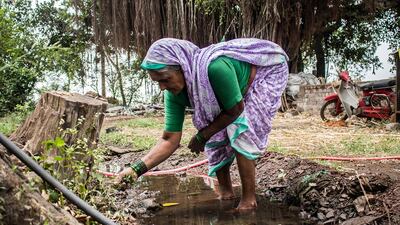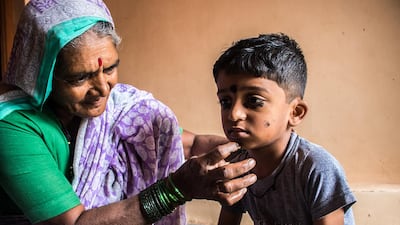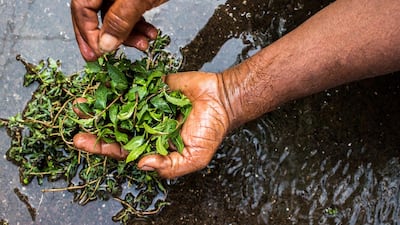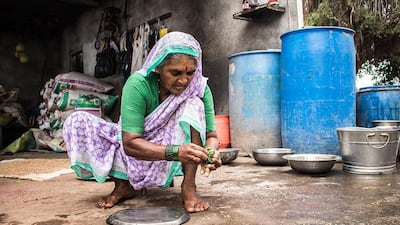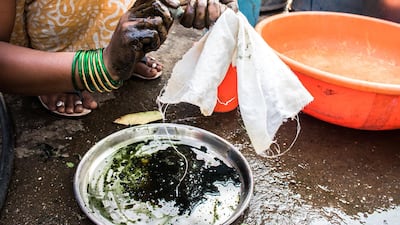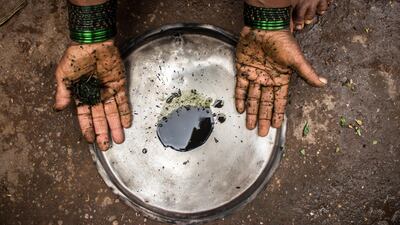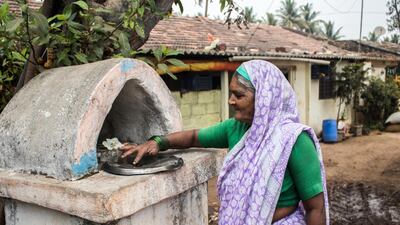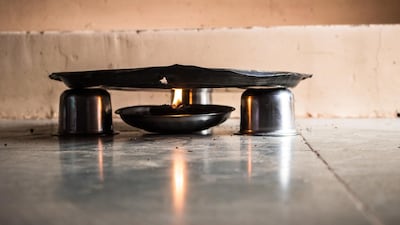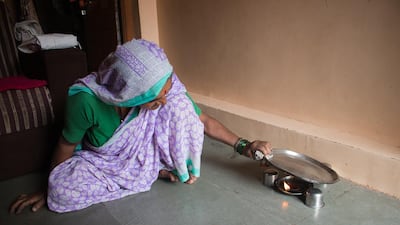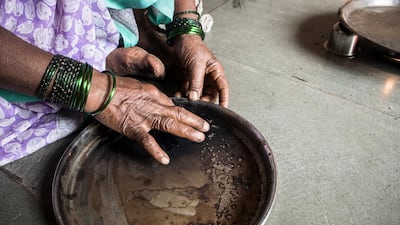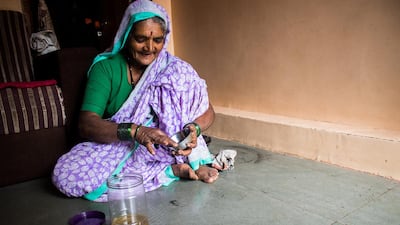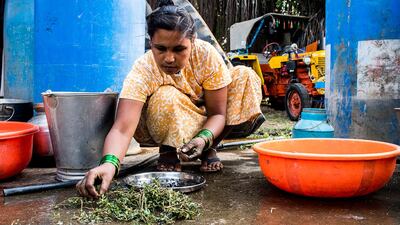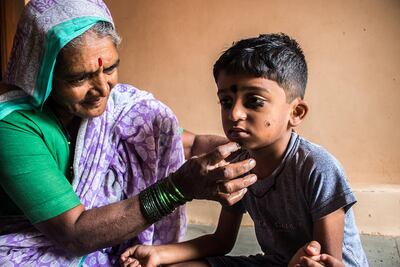Kusum Gaikwad has seen several agriculture-dependent art forms die over the past half-century. A farmer, Gaikwad, 66, once regularly extracted castor oil, wove traditional rope using the agave plant and handmade organic kohl at her farm in Jambhali village, in the Kolhapur district of India’s Maharashtra state.
Kohl, a black powdery substance also known as kajal, surma, tiro, kwalli or tozali, is worn around the eyes and remains an important product in the cosmetics industry. Popular in Middle Eastern countries and several parts of Asia and Africa, its usage is said to date back to 3100 BC, the protodynastic period in Egypt.
Gaikwad has been handmaking kohl in her field using the mhaka (Eclipta prostrata or false daisy) plant for more than five decades, but the last time she did it was eight years ago, during her grandson's birth. In India, kohl is freshly made before childbirth. It is then applied around children's eyes when they're 5 days old, and this continues until the age of 5. The belief is that wearing kohl wards off the evil eye.
But while kohl is still widely used, the tradition of making it by hand is beginning to die out, as the process is too complex and the mhaka plants used in its creation are being cleared for more profitable crops, such as sugar cane, on farms.
Even Gaikwad predominantly cultivates sugar cane now, as well as wheat, sorghum, mustard, castor and rice, plus several vegetables. She taught the art of handmaking kohl to her daughter-in-law, Ashwini Gaikwad, who now only makes it when a baby is born.
How organic kohl is made in India
Traditionally, it’s only women who practise this pastime. To make kohl the Gaikwad family’s way, first the mhaka leaves are cleaned thoroughly with water to remove the soil and dirt. Next, they are squeezed between the hands to extract the greenish-black liquid.
“Often we wrap the leaves in cotton cloth to squeeze easily,” says Ashwini, 35. Next, the mhaka juice is carefully placed on the inverted side of a concave pitali (brass) plate.
“The concave structure prevents the liquid from flowing away,” says Gaikwad. “The juice has to be dried in the sun for four to five hours.”

Next, three vatis (steel bowls) are arranged in a triangular manner that acts as a stand for this plate. A clay lamp is then kept beneath this plate. “Usually, a single oil lamp is burnt overnight.”
By morning, the kohl settles on the surface of the plate, from where it is scraped off manually. After this, a few drops of castor or coconut oil are added. “We extract both these oils using the traditional method in our field.”
Gaikwad's family is the only one in Jambhali that still cultivates castor today. "Everyone else abandoned the castor plant and started cultivating sugar cane because it fetches more money," she explains.
Organic versus chemical
In the entire village, which has a population of 4,963 as per a 2011 census, only a handful of women from the Gaikwad family remain the go-to kohl-making experts. Every year, women in western Maharashtra wear kohl for three days during the festival of Makar Sankranti in January, but it seems more people are turning to chemical-based products that are readily available at the markets.
Gaikwad says this method of making kohl is not safe, however. "The doctors suggest to not adorn the eyes with chemical kohl," she says, citing advice from the US Food and Drug Administration, which has deemed it illegal in America and warns chemical kohl is harmful because of the concentration of lead sulfphide, which can cause anaemia, neurological damage and kidney problems.
However, this hasn't affected the people's attitude towards buying chemical-based kohl in India, meaning the hand-made variety is falling out of favour. "No one has come forward to learn making organic kohl," says Gaikwad.
A decade ago, several farmers asked her for mhaka plants, but today she hears from no one.

“When people cultivate sugar cane, they clear mhaka or any such plants in the fields,” she says. Rampant use of chemical fertilisers also causes these plants to die. But once this plant species dies out, there will be no longer be any way to make kohl the traditional way.
“Chemical farming has killed multiple art forms. You have to have a love for the art to keep it alive.”
'I can't even go door-to-door'
The Gaikwad family, seemingly the only one handmaking organic kohl in Maharastra, is determined to keep the art alive, no matter what.
They've never monetised it, despite receiving floods of requests until the early 2000s, when demand started to decline. "We never sell the kajal. We give it to people for free."
They might have to start charging in the future, however, as it’s been difficult for them to keep the farm afloat amid the pandemic. “Every Tuesday and Friday, I used to sell vegetables in the nearby Ichalkaranji town,” Gaikwad explains. “With a lockdown, I was forced to sell it in the village and that didn’t fetch me enough price.
In the last week of April, her remote village registered more than 50 Covid-19 cases. "Now even the village vegetable markets are shut. "With rising cases, I can't even go door-to-door to sell the vegetables."

